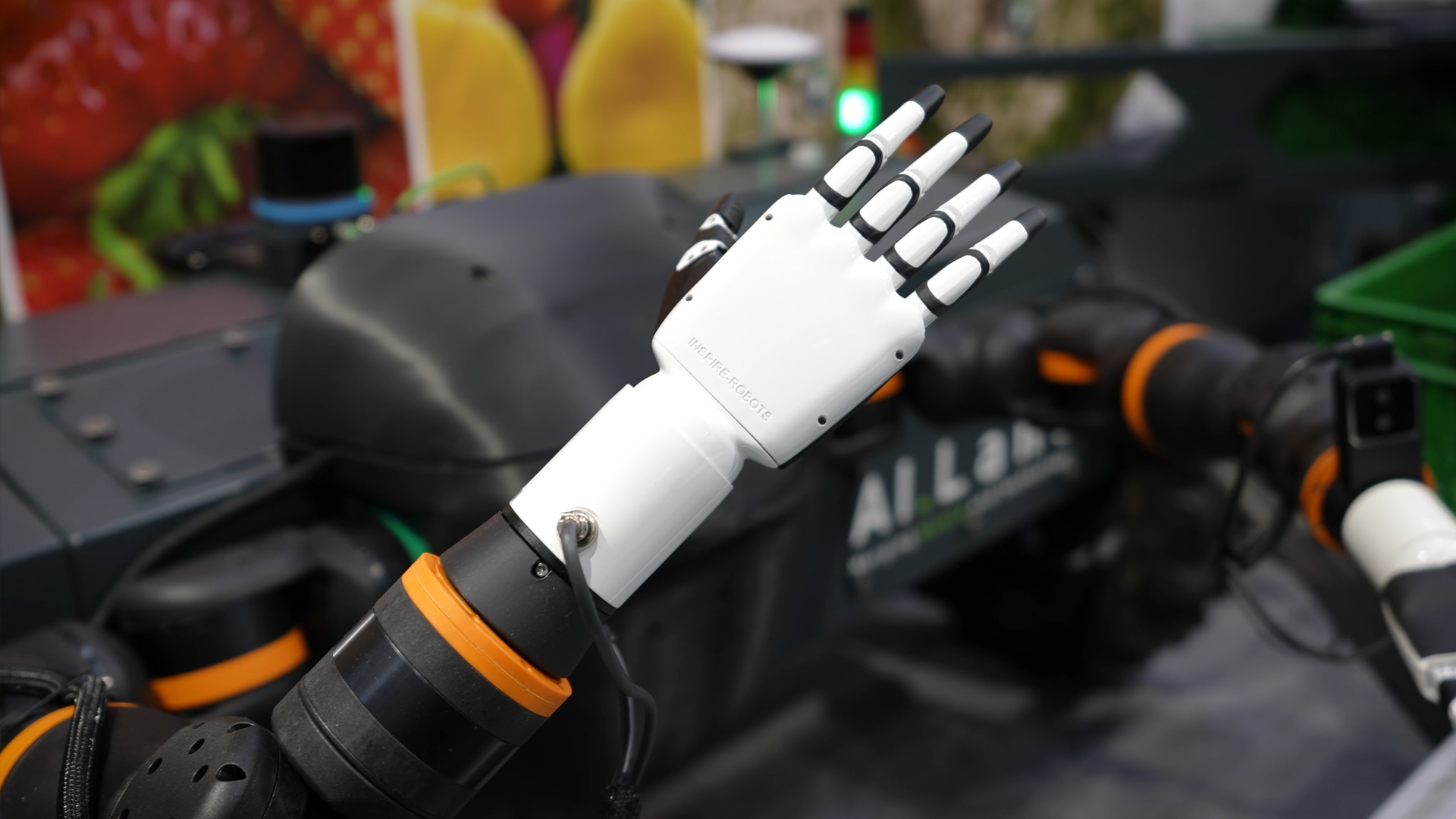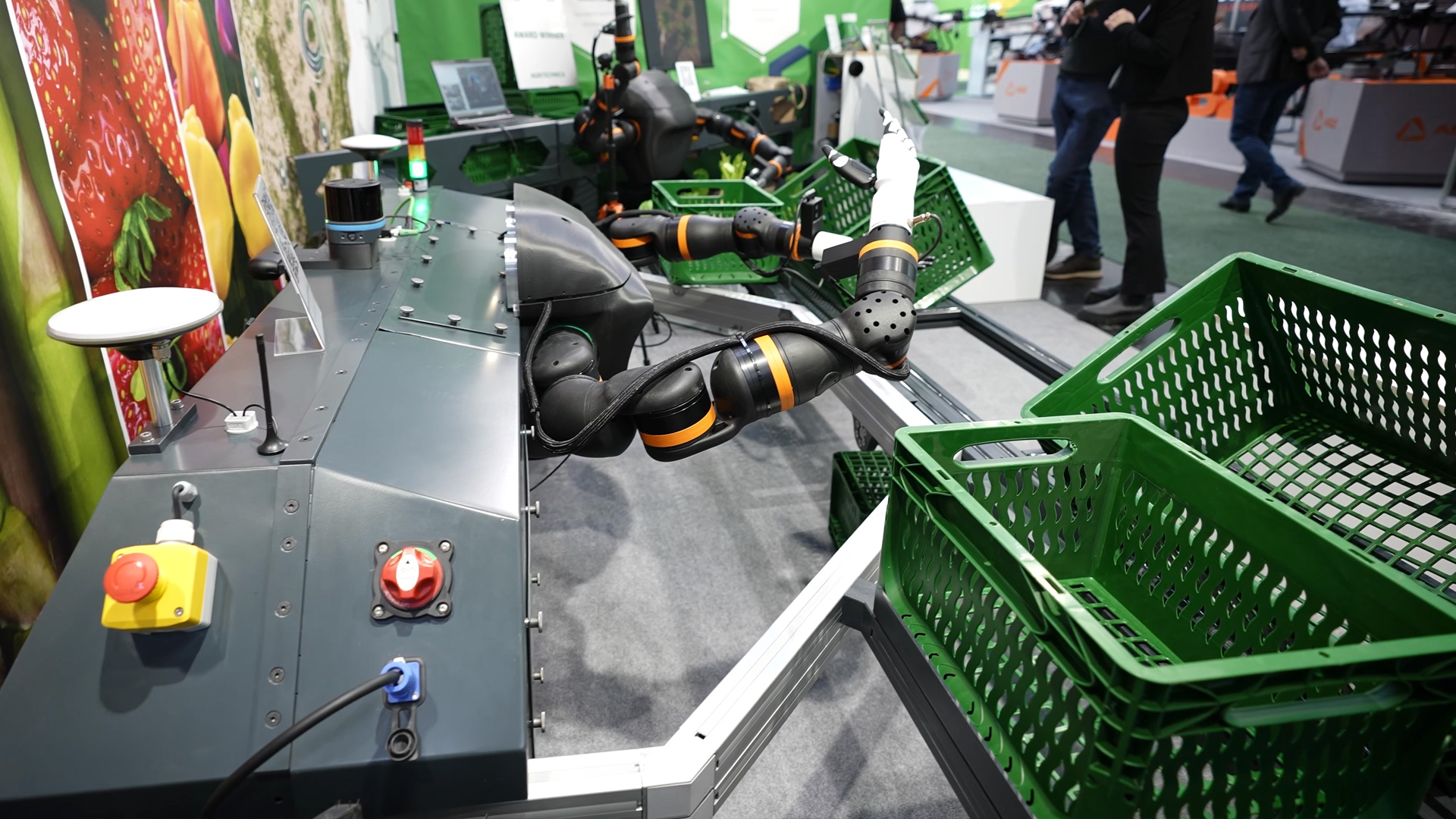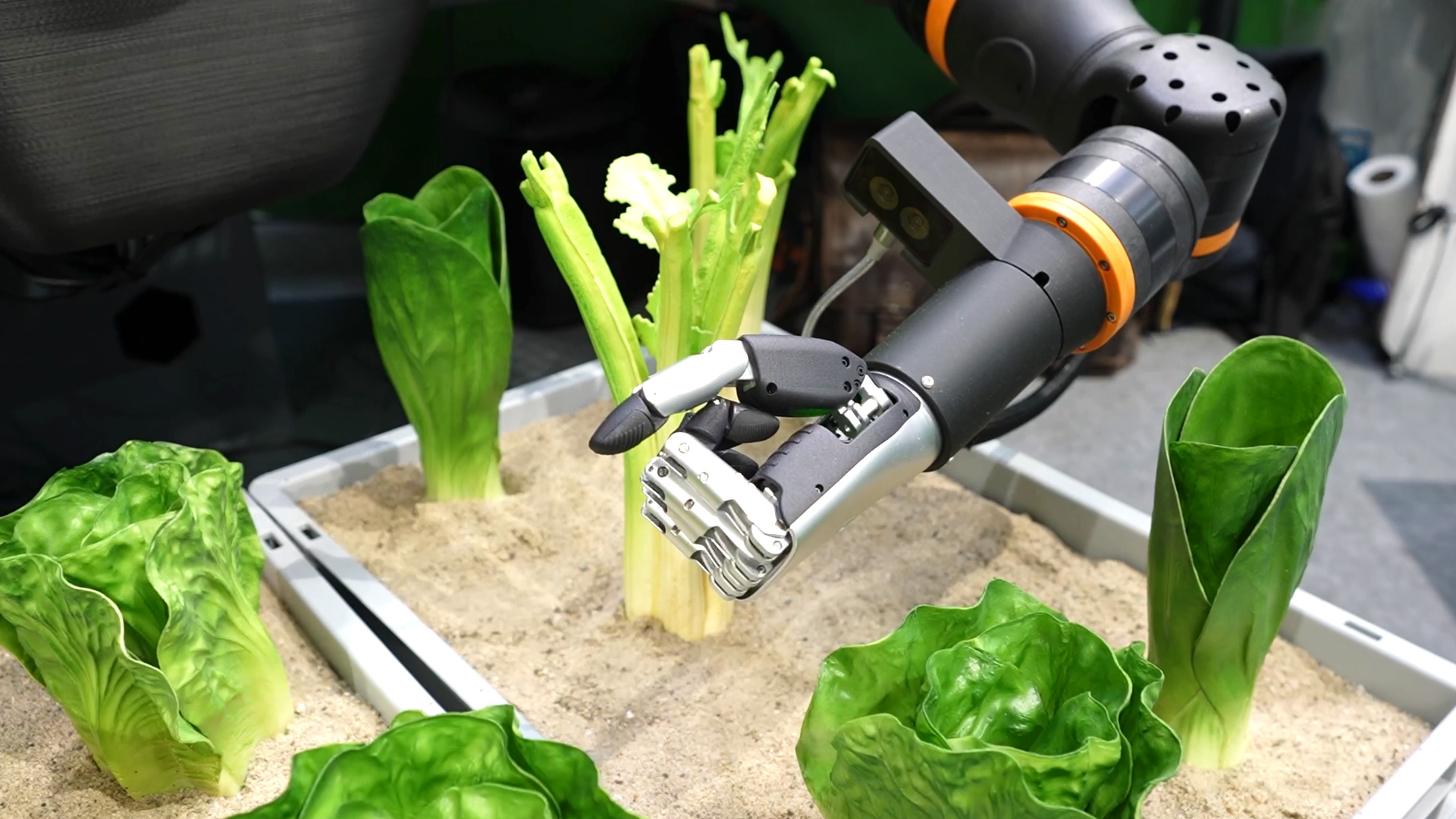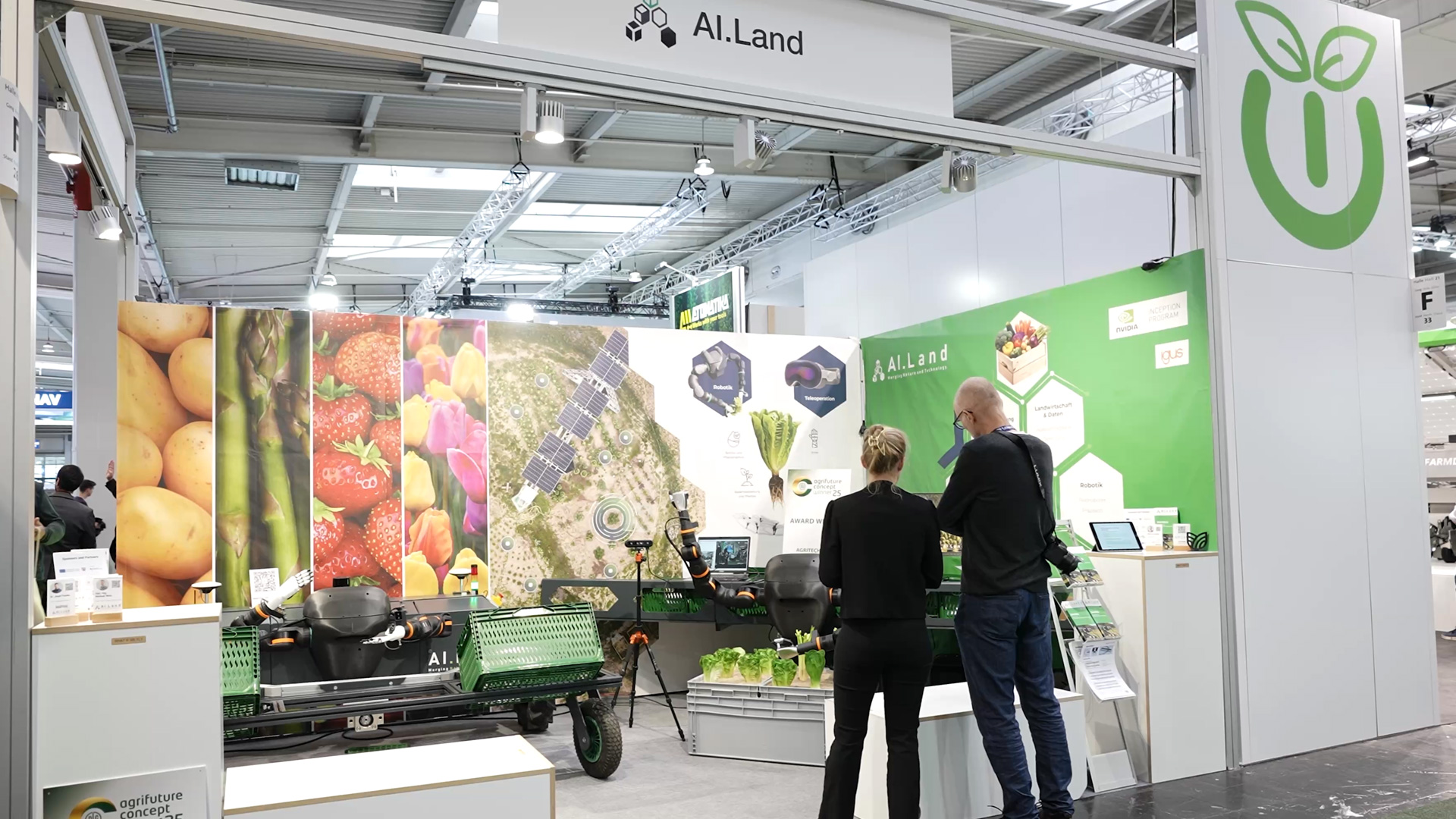At Agritechnica, AI.Land is presenting systems that combine agriculture and artificial intelligence to create a new form of autonomous cultivation. With Davegi and Aplamo, the company is showcasing two solutions that fully automate the planting, tending, and harvesting of vegetables – from sowing to customer-specific delivery.
The Davegi system is designed for the fully autonomous cultivation of vegetables in circular fields. Sowing, tending, weed control, and harvesting are carried out automatically, controlled by AI algorithms and sensor data. Through a combination of precise sensor technology, mechanical automation, and data analysis, each plant is treated individually. AI.Land thus no longer defines the field as a homogeneous area, but as a dynamic food storage facility with specific harvest windows for each plant.

With Aplamo, AI.Land presents another highlight: an autonomous driving platform that performs all work steps – from planting to harvesting – in open fields. Based on drone data and stored databases, the system recognizes where sowing, tending, or harvesting is required. Even weed patches are targeted and controlled. Control is via a central database that AI.Land operates on its own servers. This enables secure, independent, and scalable data processing directly on the machines.
AI.Land focuses on selective harvesting instead of monoculture. Each plant is harvested individually as soon as it reaches its optimal ripeness – often already sold before it leaves the field. The harvest is automatically packed into mixed vegetable boxes and delivered directly. This creates a digitally controlled cycle from customer request to delivery that avoids waste and maximizes freshness.

The technological heart of the systems is embodied AI – a form of artificial intelligence that not only evaluates data but also controls physical movements. AI.Land's robotic arms mimic human actions to precisely grasp, cut, or plant crops. Each type of vegetable has its own model that is trained in the systems – different movement profiles are used for leeks, lettuce, or carrots. Control is via “AI at the Edge”: high-performance computers directly in the system analyze sensor data on site, without cloud dependency. This creates a self-sufficient, adaptive system that responds to changing conditions and adjusts tasks immediately.

AI.Land relies on renewable energies to operate its systems. Solar panels supply the electricity, which is collected in buffer storage tanks and used for continuous operation. The systems operate around the clock, independent of external power supplies. A special detail: the panels are tilted to collect additional rainwater. This is collected in the system and reused – contributing to resource conservation and recycling in automated cultivation. AI.Land is also researching the use of hydrogen to make energy supply even more sustainable in the future.

The technology is aimed not only at farmers, but also at institutions that want to grow fresh vegetables automatically – such as hospitals, kindergartens, or companies with their own kitchens. The goal: regional, resource-saving production without labor shortages.
